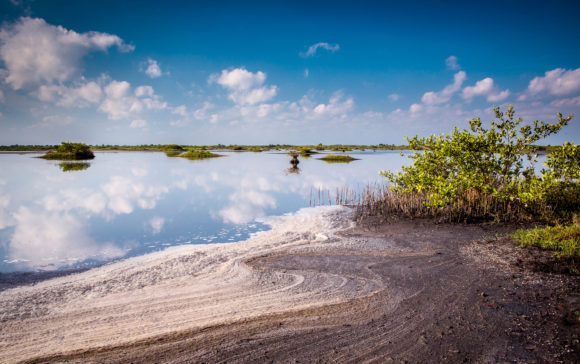The Nature Conservancy has announced plans to work with catastrophe risk modeling firm RMS, as well as with the Global Disaster Preparedness Center and others, in an effort to address climate impacts in South Florida.
The global conservation organization said the partnerships will focus on two risk demonstration projects in Miami-Dade County to find new ways to address sea-level rise, storms, floods and other climate impacts in the disaster-prone region.
According to the Conservancy, the projects will highlight and maximize the use of nature-based infrastructure solutions, such as mangroves, coral reefs, wetlands and dunes, as an important line of defense for coastal and community protection. These natural features, according to the Nature Conservancy, can be cost-effective tools to absorb floodwaters, lessen wave energy and protect coastal residents and assets from storm damages.
The organization will look at ways to protect Miami-Dade County’s more than $345 billion in assets and 2.6 million people at risk from flooding and sea-level rise. The county has already invested millions of dollars in natural and coastal area protection along with parks, trails and other open spaces. These natural areas – or natural “capital” – can be leveraged to protect county residents and assets, and enhanced and restored to further reduce risk to communities.
“The new partnerships will further support and demonstrate how effective these efforts can be to build resilience across the region and beyond,” the group said.
The new two-year partnerships formed by The Nature Conservancy include with global cat modeling firm RMS. It will work on building standards for RMS’ modeling of mangroves and salt marshes.
“Through RMS’ risk models we can quantify the way that natural ecosystems, such as coastal marshes, can reduce the cost and damage from floods to the properties they protect,” said Dr. Robert Muir-Wood, chief research officer at RMS. “In an era of rising sea levels and potentially stronger storms we will increasingly want to evaluate the role that such habitats can play in risk mitigation.”
The Conservancy will also partner with The Global Disaster Preparedness Center to incorporate natural systems into disaster preparedness plans in two soon-to-be identified key geographies. They will focus on technology and coastal cities’ ecosystems to protect vulnerable people.
Finally, the Conservancy is partnering with engineering firm CH2M and Miami-Dade County. They will prepare conceptual planning designs for two projects that contribute to flood risk reduction using natural systems or natural/engineered hybrid approaches in Miami-Dade County.
The first project, Wagner Creek Green Spaces, will involve the redesign of several creek-side properties in the Health District to create a desirable open space that absorbs some of the storm water flooding in the area.
The second pilot project, in South Dade, will model the flood risk reduction and storm protection provided to the County’s billion-dollar South District Wastewater Treatment Plant by the mangroves and other natural features between the plant and Biscayne Bay.
Ways to maintain or increase protection of the plant with natural and hybrid approaches will also be modeled.
The use of natural infrastructure – alone or in tandem with hybrid coastal and inland engineering techniques – can be more cost effective over time than just the use of concrete seawalls and levies on their own.
Nature grows larger and stronger over time, whereas seawalls and breakwaters erode and cost more due to necessary maintenance and repair. One study, the Conservancy said, shows the cost of building a breakwater versus restoring a natural reef, is 20 to 1.
Was this article valuable?
Here are more articles you may enjoy.



 Beryl’s Remnants Spawned 4 Indiana Tornadoes, Including an EF-3: NWS
Beryl’s Remnants Spawned 4 Indiana Tornadoes, Including an EF-3: NWS  Insurers Settle With Hotel in Case of Woman Videotaped in the Shower
Insurers Settle With Hotel in Case of Woman Videotaped in the Shower  Travelers Reverses Q2 Income Loss, Narrows Underwriting Loss
Travelers Reverses Q2 Income Loss, Narrows Underwriting Loss  Study Urges Rethinking of Disaster Management in Era of Compounding Events
Study Urges Rethinking of Disaster Management in Era of Compounding Events 


